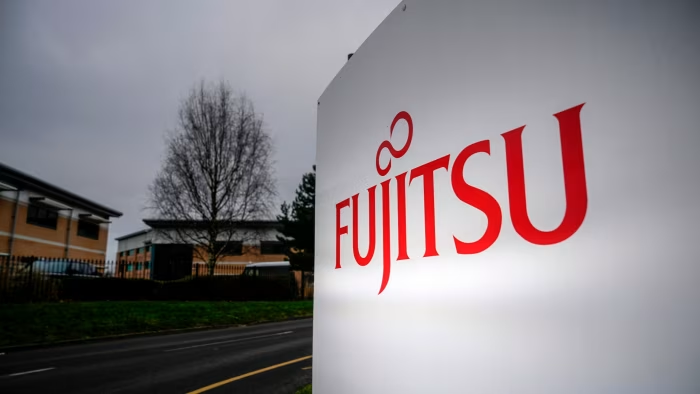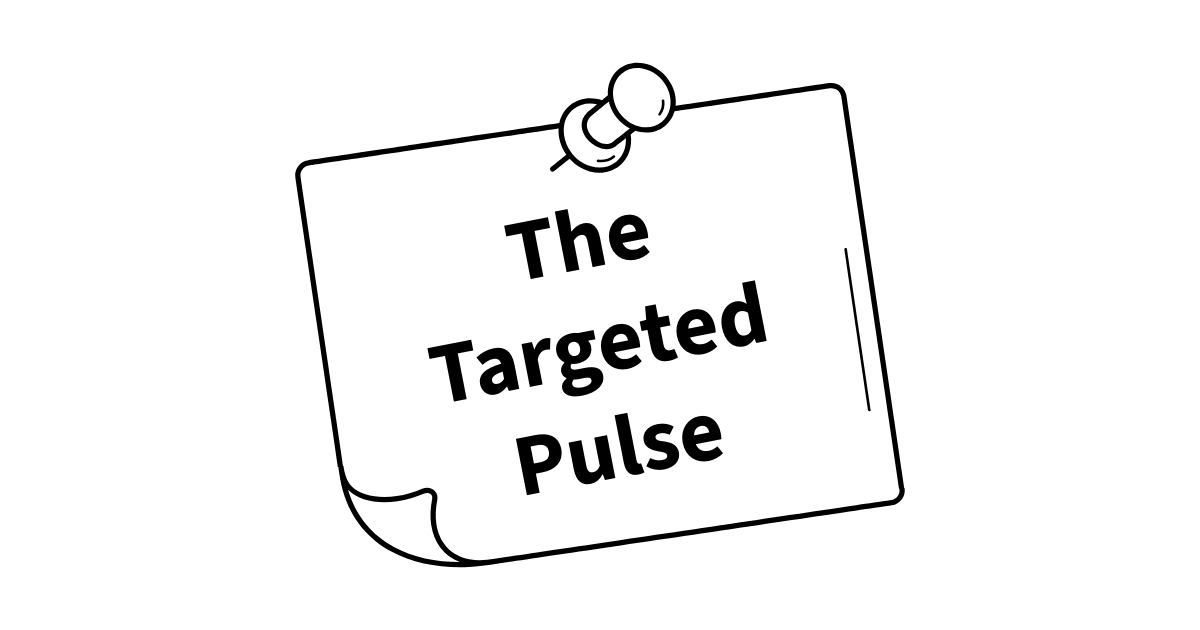Ryan Reynolds has…
Blog
-

Boss of company linked to Post Office scandal gets 50% pay rise
Unlock the Editor’s Digest for free
Roula Khalaf, Editor of the FT, selects her favourite stories in this weekly newsletter.
The head of the UK arm of Fujitsu, the technology group at the centre of the Post Office Horizon scandal, received a 50 per cent pay rise last year as its parent company injected fresh capital to offset falling orders and reputational damage.
Accounts for UK-based Fujitsu Services, a subsidiary of the Japanese IT services company, show its highest-paid director — understood to be UK head Anwen Owen — earned £591,000 in the year to March 2025, up from £388,000 a year earlier. Owen, a former senior civil servant who joined the UK company’s board in 2022, previously held roles at the Treasury and Cabinet Office.
According to the accounts, Fujitsu’s parent injected £80mn into the business to “strengthen the balance sheet” and support operations, following a £200mn capital infusion the previous year.
Revenues fell 9.2 per cent to almost £1.1bn, while profit recovered to £15mn from a loss the year before. However, the company’s order pipeline contracted by a fifth to £904mn, with management warning that the “loss of future new business due to reputational damage arising from the Horizon inquiry remains a key risk”.
More than 900 sub-postmasters were wrongly prosecuted between 1999 and 2015 due to faults in the Horizon computer system, which was developed by Fujitsu and falsely showed accounting shortfalls. More than 230 sub-postmasters were jailed, and at least 13 are believed to have taken their own lives.
In its latest filings, Fujitsu said it “continues to support the inquiry process until its conclusion” and is “engaging in discussions with the UK government regarding an appropriate and proportionate contribution” to compensation for victims.
The company said ahead of the inquiry’s final findings, “it is not possible to estimate the amount of a future financial contribution” and therefore no provision has been made in its balance sheet.
The pay rise and cash injection were first reported by the Times and the Sunday Telegraph.
Fujitsu has suspended bidding for UK government contracts until the conclusion of the public inquiry into the Horizon system.
The company told the Financial Times that it continued to work with the government “to ensure we adhere to the voluntary restrictions we put in place regarding bidding for new contracts” and was “engaged with government regarding Fujitsu’s contribution to compensation”.
It added that “improved operating margins and the successful delivery of strategic cost reduction measures” had helped boost pre-tax profits.
“We remain focused on supporting our UK customers, through the delivery of innovative IT services and solutions,” the company said.
The UK government last week pledged to improve the compensation schemes for victims of the Horizon scandal. Business secretary Peter Kyle said ministers would create an appeals process for sub-postmasters who accepted fixed-sum payments under earlier settlements, allowing them to pursue full, evidence-based redress.
The first report of the public inquiry, released in July, found that both Post Office and Fujitsu employees were aware of serious flaws in the Horizon system but “maintained the fiction” that it was reliable. The government has accepted all but one of the inquiry’s 19 recommendations, including proposals for an independent body to oversee redress in future cases.
Fujitsu’s accounts also disclose a £4mn damages claim filed by a former sub-postmaster in July. Fujitsu does not identify the claimant, but media reports have linked the case to Lee Castleton, whose story featured in ITV’s Mr Bates vs the Post Office. The company said it was “not yet possible to predict the outcome” of the case.
Continue Reading
-

The Targeted Pulse: Updates in Lung, Breast, and Skin Cancers | Targeted Oncology
Welcome to this week’s edition of The Targeted Pulse, your weekly wrap-up of the top developments in oncology. This week, we saw several breakthroughs in targeted therapies and FDA decisions, bringing renewed hope to patients and clinicians alike. From regulatory designations for promising new drugs to crucial clinical trials, here are the top stories that shaped the week.
Low-Dose Nivolumab Offers Novel Strategy for Hodgkin Lymphoma Treatment A phase 2 study found that a low-dose regimen of the immunotherapy drug nivolumab (Opdivo; 40 mg) combined with lenalidomide is a highly effective, chemotherapy-free strategy for classical Hodgkin lymphoma (cHL). The combination achieved an overall response rate of 90% with a favorable safety profile.
Crucially, researchers observed that the 40 mg dose was sufficient to achieve complete PD-1 receptor occupancy, suggesting that the standard, higher nivolumab dosing may be excessive. The findings advocate for using pharmacodynamic biomarkers to guide personalized, cost-effective dosing schedules. This evidence-based approach challenges traditional dosing models, offering a path to significantly reduce treatment costs and improve global access to nivolumab, especially in resource-limited areas. A phase 3 trial is currently underway to compare this novel low-dose regimen with the standard ABVD chemotherapy.
FDA Approves Lurbinectedin/Atezolizumab for ES-SCLC Maintenance The FDA has approved the combination of lurbinectedin (Zepzelca) and the immunotherapy atezolizumab (Tecentriq) for first-line maintenance treatment in patients with extensive-stage small cell lung cancer (ES-SCLC). This regimen is for patients whose disease has not progressed after initial induction therapy.
The approval is based on the phase 3 IMforte trial, which demonstrated statistically significant improvements in survival. Compared to atezolizumab alone, the combination reduced the risk of disease progression or death by 46% and the risk of death by 27%, with a median overall survival of 13.2 months. This maintenance strategy addresses a critical need in ES-SCLC to proactively prevent aggressive relapse.
FDA Approves Cemiplimab for Adjuvant Cutaneous Squamous Cell Carcinoma The FDA has approved the immunotherapy cemiplimab-rwlc (Libtayo) as the first and only adjuvant treatment for adults with high-risk cutaneous squamous cell carcinoma (CSCC) following surgery and radiation.
This approval is based on the phase 3 C-POST study, which demonstrated that cemiplimab significantly improved disease-free survival (DFS). The treatment reduced the risk of cancer recurrence or death by 68% compared with placebo, addressing a critical unmet need for patients with a high risk of relapse. The findings also showed an 80% reduction in locoregional recurrence risk, marking a practice-changing milestone in preventing recurrence for this vulnerable population.
Orca-T Earns FDA Priority Review in Heme Malignancies The FDA granted priority review to the biologics license application (BLA) for Orca-T, an investigational allogeneic T-cell immunotherapy for treating high-risk hematologic malignancies, including AML, ALL, and MDS. The priority review is based on data from the phase 3 Precision-T study. This trial showed that Orca-T significantly improved patient outcomes compared to standard allogeneic hematopoietic stem cell transplant (alloHSCT), particularly in achieving survival free of chronic graft-vs-host disease (cGVHD). Specifically, Orca-T achieved a high survival rate with a much lower incidence of moderate to severe cGVHD (13% vs 44%). This milestone aims to provide a potentially curative option with reduced treatment-related complications.
Dato-DXd Delivers Significant TNBC Survival Benefits in Phase 3 Trial The antibody-drug conjugate (ADC) datopotamab deruxtecan (Dato-DXd; Datroway) showed statistically significant improvements in both overall survival (OS) and progression-free survival (PFS) for the first-line treatment of metastatic triple-negative breast cancer (TNBC). The pivotal phase 3 TROPION-Breast02 trial demonstrated that Dato-DXd was superior to standard chemotherapy for patients for whom immunotherapy was not a treatment option. This is the first trial to show an OS benefit in this challenging patient population, suggesting a potential shift in the standard of care for a disease often associated with a poor prognosis.
Continue Reading
-

Qualifier Valentin Vacherot triumphs in all-cousin final against Arthur Rinderknech
From alternate to qualifier, Valentin Vacherot is now the champion of the 2025 Shanghai Masters.
The Monegasque came from a set down to become the first tennis player from Monaco to win an ATP title, even more extraordinarily against his cousin,…
Continue Reading
-

Weather Watch: United States Grand Prix 2025 forecast
Formula 1 begins a run of races across the Americas this week, aptly kicking-off at the Circuit of the Americas.
A visit to COTA is always popular with drivers, teams and fans alike, and most of the time, there’s not been the need to pack…
Continue Reading
-

Study Reveals ‘Alarming’ Rise of Superbugs in Newborn Babies : ScienceAlert
Humanity’s war against drug-resistant microbes is not going very well.
Antibiotic resistance has rapidly become one of our species’ leading causes of death, claiming an estimated 5 million lives globally in 2019. That already exceeds the…
Continue Reading
-

From the Archives: Victoria Beckham on Finding Her Life’s Passion
Like many women designers, Victoria approaches her work in a way that’s uniquely personal and subjective. “I’ve always had to make the best of what I’ve got,” she tells me. “I’ve never been a six-foot-tall, skinny model [she is five feet…
Continue Reading
-

32in mountain bikes are here, but brands need to learn from the lessons of 29ers first
Zinn Cycles’ B.I.G. 32er is one of the first production full-suspension mountain bikes to be fitted with 32in wheels; a diameter starting to gather momentum in the industry.
Specifically, however, the B.I.G. is designed for riders 193cm tall and…
Continue Reading
-
Zelda Meets Animal Crossing in Banger PlayStation Plus Freebie
PlayStation Plus users have been recommended this free game available on the service’s Game Catalog, and we’d recommend checking it out.
If you want a game that imbues the cute aesthetics of Animal Crossing with the action-oriented gameplay of…
Continue Reading
-

Will investors be flying blind without September CPI data?
Stay informed with free updates
Simply sign up to the US economy myFT Digest — delivered directly to your inbox.
The continuing US government shutdown has stopped official data releases, which will leave investors without the September inflation data that had been scheduled for publication on Wednesday.
Economists polled by Bloomberg had expected the consumer price index from the Bureau of Labor Statistics to show an increase in inflationary pressures. Instead, the BLS said on Friday that it planned to release its data on October 24.
The CPI release, while more than a week late, will still come in time for the Federal Reserve’s rate-setters, which next meet on October 28-29, to factor it into their policy decision. At their last meeting, they signalled a greater focus on the risks from a slowing labour market than from rising inflation. The “dot plot”, the Fed’s survey of its own members’ forecasts, suggests that policymakers expect inflation to be running at 3 per cent by year-end, slightly above the current rate.
The absence of inflation data could keep investors from making big moves in markets. In place of the BLS data, many have resorted to a slew of private data providers alongside survey data from the Fed, such as its “beige book”, for insights into the US economy.
Still, President Donald Trump’s Truth Social post on Friday promising new tariffs on China led to a drop in stocks and a jump in volatility, suggesting that if the risks are high enough, some investors may jump, with or without the economic data to hand. Kate Duguid
How healthy is the UK economy?
Investors will scrutinise UK labour market data on Tuesday and GDP figures on Thursday for insights into underlying inflation pressures and the health of the economy.
Economists polled by Reuters expect annual wage growth (excluding bonuses) for the three months to August to edge down to 4.7 per cent, from 4.8 per cent in the three months to July. They expect the unemployment rate to be unchanged at 4.7 per cent.
Bank of England policymakers are concerned that wage growth is running too hot for their 2 per cent inflation target, particularly given the UK’s weak productivity record.
While the labour market figures remain uncertain because of poor survey response rates in recent years, analysts will focus on whether recent declines in employment are enough to cool wage growth. A sharp slowdown in wages and a deterioration in hiring could reinforce expectations of interest rate cuts in 2026.
Markets are pricing that the BoE will make one or two quarter-percentage-point cuts next year.
As for the GDP data, economists expect month-on-month growth in August of 0.1 per cent, up from zero growth in July, taking the three-month-on-three-month rate — now the Office for National Statistics’ preferred measure — to 0.3 per cent, up from 0.2 per cent previously.
Ellie Henderson, economist at Investec, also forecasts marginally stronger growth in August but said tax increases expected in the November Budget would have an impact on activity in the autumn.
“Various surveys suggest the prospect of fiscal tightening is already prompting households and firms to delay spending and investment,” she said. “Speculation around the scale of adjustment needed is likely to grow in the run-up to [the Budget on November 26], acting as a further drag on output.” Valentina Romei
Will China’s trade surplus keep defying gravity?
Chinese exports are expected to jump again when Beijing reports trade figures for September on Monday, as the outward flow of goods continues to swell despite the Trump administration’s tariffs.
Economists expect Beijing to report a year-on-year rise of 7.1 per cent in exports during the month, up from 4.4 per cent growth in September. With imports seen rising at a 1.5 per cent pace (up slightly from 1.3 per cent), China’s monthly trade surplus is expected to come in at a hefty $100bn.
The persistently strong figures have defied many economists’ expectations that China’s export machine would slow as Trump’s tariffs took effect — especially since the weakening dollar has sent the renminbi up 2.4 per cent against the greenback this year.
However, a growing chorus of analysts has pointed out that, on a trade-weighted basis, the renminbi is depreciating. It has fallen 8.6 per cent this year against the euro, for example, making exports to Europe more competitive.
China’s trade surplus with the Eurozone is growing rapidly. For the first eight months of the year, exports to the continent grew 5.4 per cent, while imports fell 9.9 per cent. China’s shipments of steel and textiles, for example, have surged, adding to trade tensions.
Jacqueline Rong, chief China economist at BNP Paribas, said China’s resilient exports to non-US markets were down to more than rerouting of trade with the US. The robust growth of its exports to Europe, she said, has been “driven mostly by China’s gain in market share . . . rather than trans-shipments.” William Sandlund
Continue Reading
